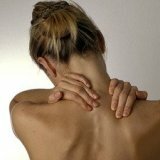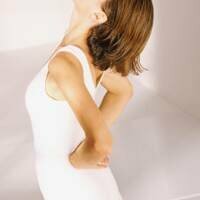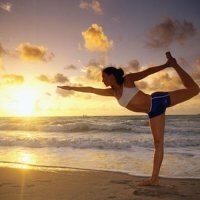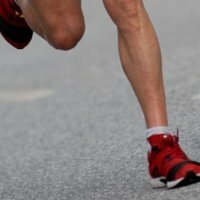Physiotherapy with cervical osteochondrosis

Therapeutic physical training in cervical osteochondrosis( LFK) is one of the main non-drug treatment methods for this disease. Its main task is to strengthen the body, reduce pathological proprioceptive impulses from the cervical to the humerus, and vice versa, improve the circulatory process in the affected area, reduce edema in tissues located in the intervertebral foramen.
Basic drugs of exercise therapy for cervical osteochondrosis:
- physical exercises for coordination, relaxation,
- breathing exercises,
- exercises for strengthening the muscles of the cervical region, shoulder girdle and chest,
- exercises in water,
- therapeutic massage.
Having established the stage of cervical osteochondrosis, the attending physician prescribes appropriate exercise therapy and gives recommendations.
Health education for osteochondrosis, prescribed in the acute period of the disease, includes exercises aimed at relaxing the muscles of the upper limbs of the shoulder girdle.
When the pain begins to gradually subside, exercises are chosen to strengthen the muscles of the cervical as well as the humerus.
Isometric exercises are very effective in the prevention and treatment of cervical osteochondrosis. They can be performed at home, at work, in transport. To perform such exercises, no special equipment is required, in time - only five minutes is enough. Isometric exercises will be useful for patients and for people with a sedentary lifestyle. They contribute to the creation of a good muscle corset, improve blood circulation, memory, vision, increase mental capacity. Performing these exercises throughout the day at intervals of two to three hours, you will notice how quickly the pain in the neck will disappear.
Physiotherapy exercises: complex of exercises for osteochondrosis of the cervical department
The complex of exercises is carried out in isometric mode( resistance is overcome without making dynamic movements).
- The right hand should be pressed on the right cheek, the head should resist at the same time. Do the same with your left hand.
- It is necessary to weave fingers, put the palms on the forehead, press on the head, it should resist( there will be tension of the neck muscles).
- Hands clenched in fists, it is necessary to place under the chin one on the other. You have to tilt your head down, and resist with your hands.
- It is necessary to weave the fingers of the hands, put the palms on the back of the head and press on the head, while resisting it.
- The right palm should be placed on the opposite cheek and try to perform the turn of the head, while the head should resist. The same must be done with the other cheek.



